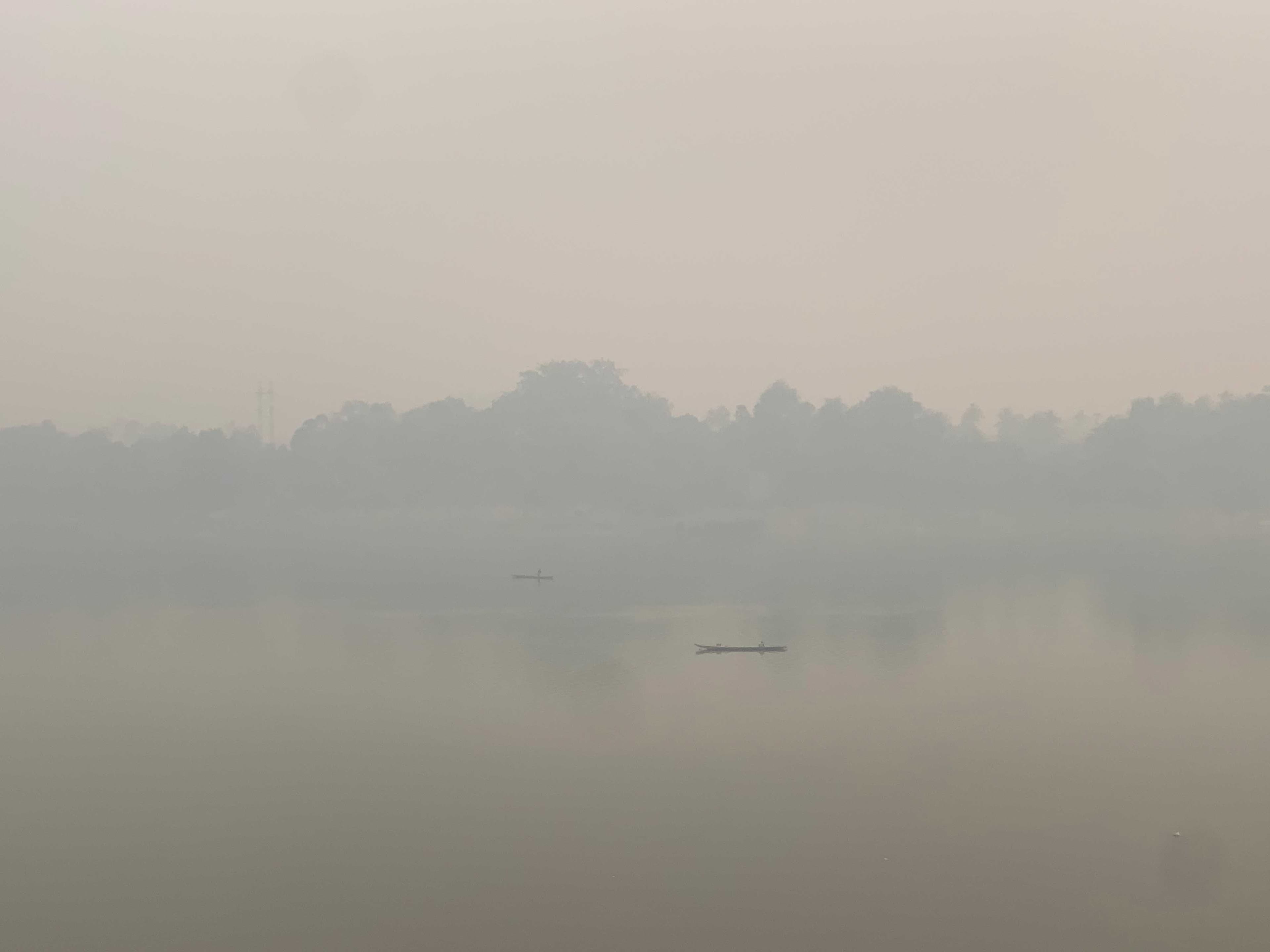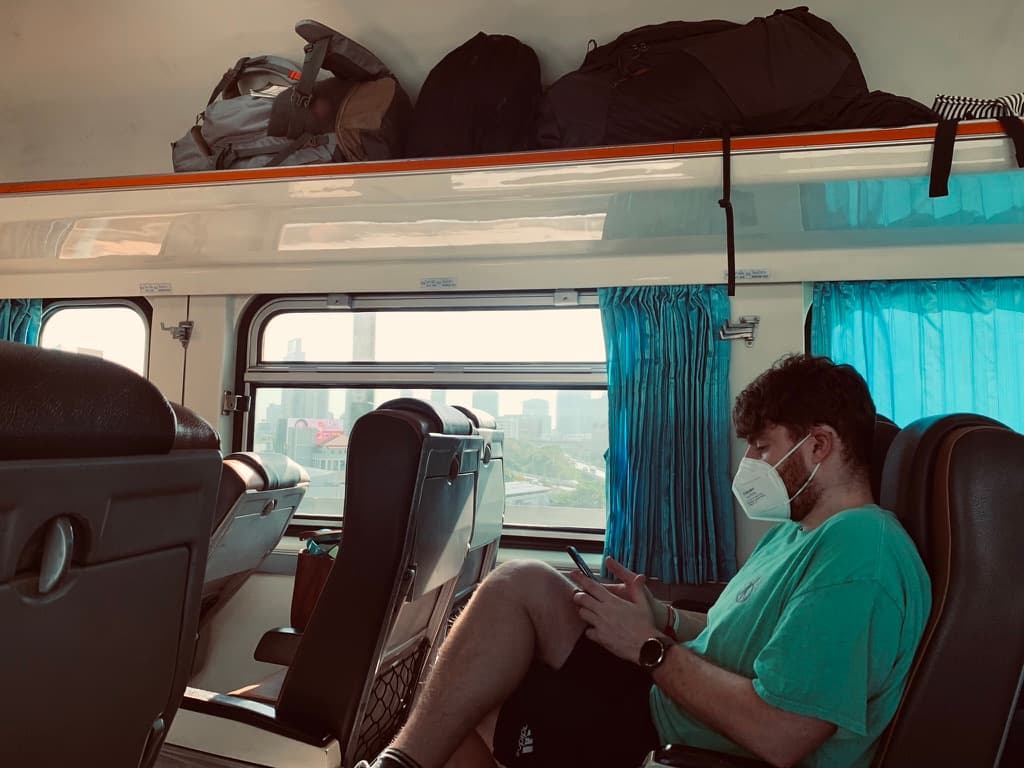We arrived in Chiang Mai, our second destination on our journey through Southeast East Asia, on the 22nd of January 2023, and during our train journey up, through patches of jungle and paddy fields, we could already spot quite a few bonfires. They were small, but the wafting smell of smoke still made its way through the train's ventilation system.
What is the Burning Season?
In short, the "Burning Season," caused by the so-called “Slash and Burn” method, usually runs between January and April in northern Thailand. It's an ancient farming technique, more than 10,000 years old, where farmers burn the leftover crops to fertilise the soil and prepare the fields for the next crop. The smoke creates a thick smog, reducing visibility and deteriorating the air quality in Chiang Mai and other northern Thai cities.
However, this phenomenon is much more complex than we can superficially illustrate in this article. Slash and Burn has evolved from a small-scale form of fertilisation—which, according to Jefferson M. Fox[1], in most cases, has led to a loss of biodiversity by eliminating this ancient practice—to the real threat posed by the large-scale commercial cultivation of cash crops.
Situation in Chiang Mai
In Chiang Mai, we monitored the situation by checking the IQair app, although we could usually tell how bad or good it was by just stepping outside. The days varied, and the views on our trips to Doi Inthanon and Doi Suthep were completely obscured. Our trip to Doi Suthep was only a week after we arrived, so at the end of January, this was the view—ha!
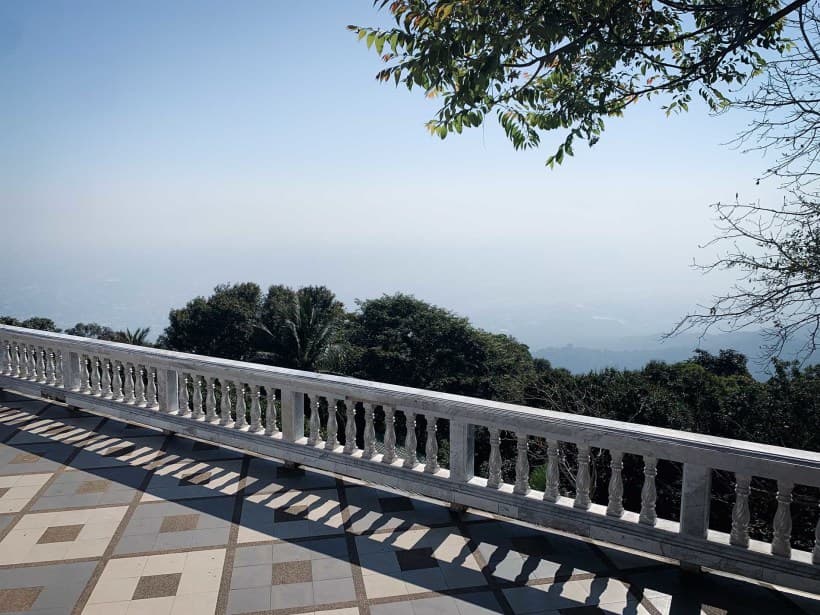
Smoke seen from Doi Suthep's viewpoint
We were staying in the Nimmanhaemin area, just off Nimman Road, affording us a clear view of Doi Suthep Hill and the day-by-day variation in air quality. You can also find a map which illustrates the fire areas month-by-month in this article[2].
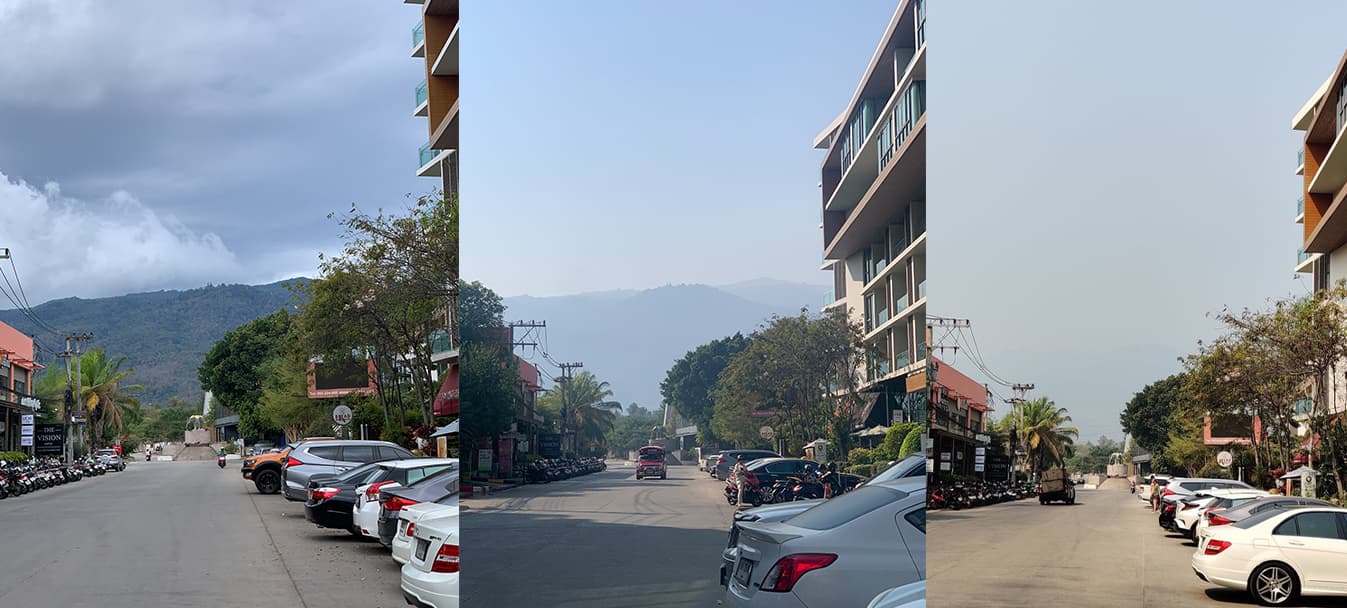
Doi Suthep Hill seen from Chiang Mai on different days
Dry, rainy and Burning Season in Thailand
Travel books and blogs offered mixed advice on the subject. While many sources claim that the burning starts at the end of January and doesn't become severe until March, we found the air quality to be quite poor from mid-January to mid-April. It's wise to keep in mind that the burning season coincides with the late dry season. In February, March, and April, the landscape takes on an end-of-summer or autumnal appearance, leaves fall, and those famous rice fields turn to dry earth.
The distinction between dry and rainy seasons isn't as straightforward as you might think. Neither is good or bad per se. The rainy season typically brings full-on downpours (not mere showers) in the afternoons, freshening the air, with mornings usually clear and suitable for sightseeing. However, temperatures do increase at this time of year. The dry season sees temperatures ranging between 25°C and 30°C, and as the name suggests, the landscape will be parched unless you travel in the early dry season.
Climate change has, like everywhere else in the world, drastically altered the weather patterns, introducing droughts, floods, and other complications. It's becoming challenging to pinpoint the best time of year to visit certain locations. In my opinion, the real thing to avoid is the burning season, not necessarily the rainy season. We had an incredible time in Cambodia, where we spent a full month during the rainy season. Every day, we witnessed majestic storms that never interfered with our sightseeing plans (we usually work in the afternoons).
So, if you're considering visiting Chiang Mai, Northern Thailand, or even Northern Laos, the end of September to the end of December should be perfect. You should see lush paddy fields and jungles, and there should be no smoke!
Fast speed train from Luang Prabang with view of dry scenery
If you do find yourself in Chiang Mai or Northern Thailand during the late dry season, I would check the IQair app (on iOS AirVisual) before leaving to go anywhere (it has a forecast too), and if it's anything above 75 US AQI, I would avoid the hassle of going to places with a viewpoint and try another day. You might be unlucky and not see a single clear day. We stayed in Chiang Mai for a month; it rained once, and the two days after were nice and clear, and the air quality had gone down to 25 US AQI.
Just the beginning
So, this is what I wrote not realising what was ahead of us and only seeing the tip of the iceberg. The burning season is not only in Thailand but in a big percentage of SE Asian countries. It's most prevalent in countries such as Myanmar, Laos, Thailand, Indonesia, and Malaysia, but it affects neighbouring countries too.
Slash and Burn has been going on for thousands of years all around the world and was a traditional and effective practice when on a small scale, as it was an inexpensive way to fertilise the soil. In these modern times, it has increased drastically and become a huge environmental problem because it is used on a much larger scale. Still, Slash and Burn is not the only culprit of deteriorating air quality.
There are places where rubbish is being burnt too. Thailand, for example, has 2 million tons of plastic waste, with half a million tons being imported from Japan, the US, and EU countries. In 2017, China banned plastic waste imports, leading to the countries exporting them using Thailand as the new dumping land. From 70 tons in 2018 to over 550 thousand tons in 2020. We found an interesting video about the rubbish issues in Thailand:
Situation in Luang Prabang, Laos
After leaving for Thailand, we visited Laos. Here we experienced something completely new to us, but not out of the ordinary for people who live there. Laos was not mentioned much in the news for its burning season or the consequences it has on its population, but the thick haze made its way through windows and doors, and one day got to an index of 477 US AQI (remember what I said it was in Chiang Mai when it was bad?).
As we walked around Luang Prabang, it seemed like a cloudy day. We could not see our shadows because the sun was nearly completely obscured - it looked like a red ball in the sky surrounded by grey. On days like these, you notice it in indoor areas too; you wake up and can smell the smoke as you make your way to the bathroom - I had to wear a mask in bed a couple of times. We went out and the metallic smell was everywhere. When you take photos, the fog look-alike grey turns to a yellowy-brown filter.
It was such a weird experience as some days the levels got to over the ones in the most polluted cities of the world, but if we looked at the news, nothing was being said about Laos - a lot of news in Thailand about the critical situation in Bangkok[3] and a couple of mentions of Chiang Mai, but Luang Prabang was mentioned nowhere. I only found a 4-year-old article[4].
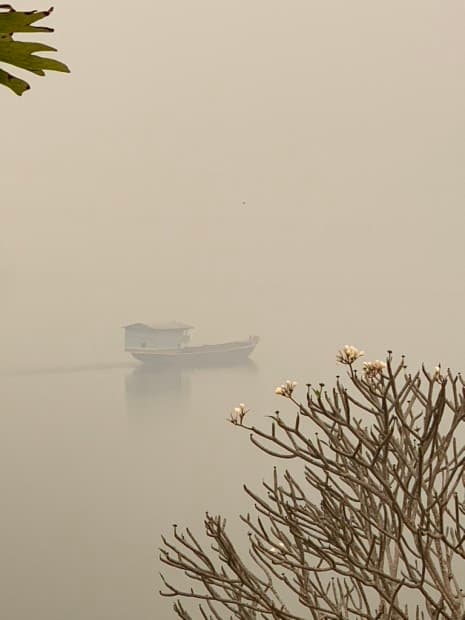
Luang Prabang - burning season 1
Lots of people were not wearing masks and were carrying on with their day, but we became more and more aware of the coughing and spitting we heard while walking around the streets. Having been concerned about our situation, we opened our eyes and realised that this happens unconditionally for 2 or 3 months every year and has become the norm.
When we searched for the same N95 masks we bought in Chiang Mai, we could not find them. These masks help filter the PM2.5 particles and do make a difference. I would even advise people to always travel with a couple; you never know if you might need them whilst hiking a volcano. In Luang Prabang, we simply kept washing our masks as we didn’t have any spares and could not find genuine ones in any of the chemists.
Not only Slash and Burn
As naive "laowai," we were slightly aghast at how this could be a situation people had to live in, but of course, it is much more complex than what we see on the surface. In some places[5], the actual burning comes from jungles and rainforest areas that are being destroyed to plant palm trees or other cash crops. This happens particularly in Indonesia and Malaysia, which account for 85-90% of the palm oil production in the world and export a total of 44,000 metric tons[6]. I knew about deforestation for palm oil, but what I hadn't realised was how deforestation was being done. I suppose I had just imagined trees being cut down, but in fact, these areas are often set alight and burnt to the ground, releasing large amounts of carbon dioxide, destroying the diversity in natural habitats, and also being terrible for the people in affected areas which sometimes already have a crippled health service.
I'm not exaggerating when I say that on our way from Tanah Rata to KL and KL to Malacca, on both sides of the motorway, for the entire journey, all you could see were plantations of palm trees – just endless.
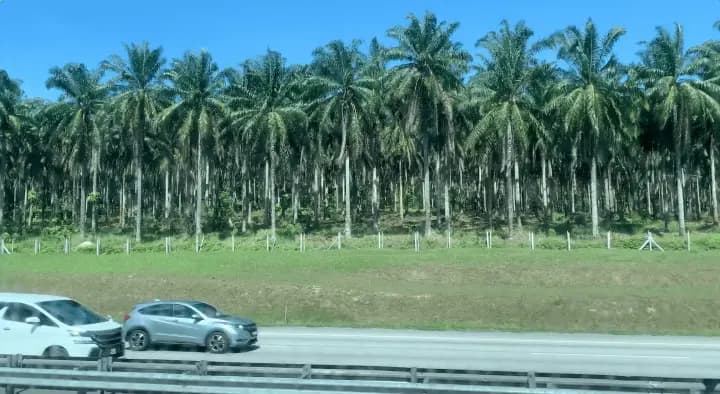
Malaysian motorway with palm trees from Ipoh to Kuala Lumpur
And yes, the palm oil produced from those trees is found in many of the food and cosmetic products we use in Europe daily. Contrary to our expectations, though, almost two-thirds of the palm oil consumed in the EU is used for energy[7]. According to Reuters, the EU is planning to phase out the use of palm oil-based fuels, reducing them to 9% from the current 23% by 2032[8]. While this may sound like a positive note to end on, and it is in some respects, it will undoubtedly create a significant imbalance in those Malay and Indonesian areas that rely heavily on the jobs created by palm oil production.
This topic is so intricate and multifaceted that another article is in the works!
If you have any questions about the burning season in Laos or Thailand, please feel free to email us! We’d be very happy to help :)
References
- How Blaming ‘Slash and Burn’ Farmers is Deforesting Mainland Southeast Asia - East West Centre
- Asia’s latest ‘airpocalypse’: Crop burning chokes Thailand - Nikkei Asia
- Thailand's extreme air pollution: 'I feel sorry for my daughter' - BBC
- Smog in Vientiane, Laos - Radio Free Asia
- The global demand for palm oil is driving the fires in Indonesia - Quartz
- Palm Oil 2022 World Exports: 50,056 - USDA
- Almost two-thirds of palm oil consumed in the EU is burned as energy - Transport Environment
- EU palm oil use and imports seen plummeting by 2032 - Reuters
Other articles
- Palm oil consumption in the European Union from 2011/12 to 2022/23
- NASA photo reveals Asia’s choking haze
- Actions needed to reduce open biomass burning and associated PM2.5 pollution in Southeast Asia countries
- Slash And Burn: Learning To Farm Sustainably After Indonesia’s Wildfires
- Chiang Mai Burning Season - Health hazards
